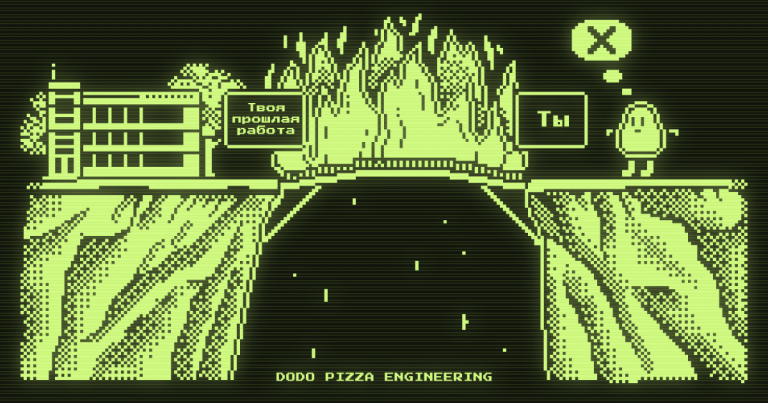Made in USSR. The first orbital space station “Salyut 1” and the spacesuit “Sokol K”
Salyut 1 is the world’s first manned orbital station in space. In the 60s of the last century
the idea came to install systems and assemblies from the Soyuz spacecraft at the future station, thereby becoming the first in the world to create an orbital station.

Feoktistov addressed this proposal to the Secretary of the CPSU Central Committee Ustinov, who oversaw the rocket and space industry. Dmitry Fedorovich supported the project and submitted it for consideration to the Politburo of the CPSU Central Committee. The project was approved by the Politburo members, especially since the USSR planned to celebrate the 90th anniversary of Lenin’s birth with labor achievements, and the 24th Congress of the CPSU was approaching.
Several orbital station buildings were transferred from the Chelomey Design Bureau to the Korolev Design Bureau. Vladimir Nikolaevich Chelomey subsequently assessed this action as a “pirate raid on his island.”
“Salyut 2”, “Salyut 3”, “Salyut 5” are orbital stations for military purposes (Chelomey Design Bureau), developed under the Almaz program for photo-television observation of the Earth’s surface. There has never been a description of the structure of these stations in the Soviet media.
Scheme “Salyut 2”, “Salyut 3”, “Salyut 5”

On January 14, 1969, the Soyuz 4 spacecraft, piloted by the Soviet Union pilot-cosmonaut, Lieutenant Colonel Vladimir Aleksandrovich Shatalov, was launched into the orbit of an artificial Earth satellite by the Soyuz launch vehicle. On January 15, 1969, the Soyuz 5 spacecraft with a crew of three cosmonauts was launched into Earth satellite orbit. On board the spacecraft were: the ship’s commander, Lieutenant Colonel Boris Valentinovich Volynov, and crew members – flight engineer, candidate of technical sciences Aleksey Stanislavovich Eliseev and research engineer Lieutenant Colonel Evgeniy Vasilievich Khrunov.
On January 16, the Soyuz 4 and Soyuz 5 spacecraft docked. This was the world’s first docking of two manned spacecraft. The ships were docked for 4 hours and 35 minutes.
On April 19, 1971, the Salyut-1 station was launched into orbit by a Proton-K launch vehicle.
The orbital station was given the name “Zarya”. However, shortly before the launch, they “remembered” that the Chinese artificial satellite had the same name and changed the name to Salyut. In the TASS report, the station was named “Salyut”, but flew with the inscription “Zarya” on board.

Due to the secrecy inherent in the entire Soviet space program, there are no available photographs of the station. The name “Salyut” stuck and was used for other stations.
The station consisted of three compartments – aggregate, working and transition, to which the Soyuz spacecraft docked. Initially, the station consisted of four main parts: an assembly compartment, a compartment with a telescope for observing the Earth, a working compartment and a return vehicle, but work progressed slowly, so a simplified version was launched into space in 1971.

Station parameters.
The mass of the station was 18.6 tons (of which the weight of scientific equipment was 1.5 tons), the length of the cylindrical part was 13.1 m, the maximum diameter barely exceeded 4 m. The volume of the premises was 100 m3. To provide the station with electricity, two sections of solar panels with a span of 10 m and an area of 33 m2 were attached to its body.
Station in space.
“Salyut 1” was launched with the following parameters: maximum distance from the Earth’s surface (at apogee) – 222 km, minimum distance from the Earth’s surface (at perigee) – 200 km, orbital period – 88.5 minutes, orbital inclination – 51, 6 degrees.
At the first stage, the flight was carried out in automatic mode. After the station’s orbital block separated from the last stage of the launch vehicle, the solar panels automatically opened and took the operating position of the antenna of the onboard radio systems.
On April 24, 1971, the first docking of Soyuz 10 with Salyut 1 was unsuccessful: the cosmonauts were unable to transfer to the station due to damage to the docking unit.
The ship returned to Earth, and Salyut 1 continued its flight in automatic mode.
On June 7, 1971, the transport spacecraft Soyuz 11 successfully docked with Salyut 1, the crew of which, consisting of Georgy Dobrovolsky, Vladislav Volkov and Viktor Patsaev, moved to the premises of the scientific station. For the first time in history, cosmonauts were transported aboard Salyut 1.
The spacecraft docking process was carried out in two stages.
- At the first, the approach of Soyuz 11 with Salyut 1 to a distance of 100 meters was carried out in automatic control mode.
- Further approach was carried out by the ship’s crew.*
*
After approaching, rigid mechanical docking of the devices and connection of their electrical and hydraulic communications were carried out. After which the cosmonauts checked the tightness of the compartments and the operation of the station’s onboard systems, as well as the microclimate parameters in the compartments of the docked vehicles. After the check was completed, the hatches were opened and along the passage we entered the Salyut 1 compartment.
Work at the station.
A wide-angle sight was tested on Salyut 1, designed for precise orientation to the Sun and planets.
Using the gamma-ray telescope, the astronauts measured the intensity, angular distribution, spectrum and other characteristics of primary cosmic radiation, and using Orion they studied the spectral composition of the radiation of some stars.
Studies were also carried out on geological and geographical objects of the earth’s surface, atmospheric formations, snow and ice cover. The astronauts took a large number of small-scale (to record short-term and seasonal phenomena) and medium-scale (to obtain detailed characteristics of the structure of the relief and natural landscapes) photographs of the Earth.
A set of important medical and biological studies was also carried out, in particular, the effect of long-term weightlessness on the human body was studied, special load suits were tested, and the radiation background around the station was measured.
The flight of the Salyut 1 station provided the first experience in creating and maintaining the operation of heavy spacecraft, and made it possible to obtain useful data on the possibility of long-term stay and work of humans in space.
The cosmonauts worked on it for more than 22 days and set a record for the longest human space flight.
Tragedy.
On June 29, 1971, undocking was carried out, and after issuing a braking impulse, Soyuz 11 began its descent from orbit. However, after the separation of the compartments, depressurization of the descent module occurred. Dobrovolsky, Volkov and Patsayev died.

Three bodies without signs of life were found in the descent module. As it turned out later, when the Soyuz was undocking, the ventilation valve opened abnormally, which led to a sharp drop in pressure in just two minutes.
The investigation showed that the astronauts tried to understand the situation, but:
- The air quickly filled with fog.
- The astronauts experienced severe pain due to acute decompression.
- The eardrums burst almost immediately and the astronauts could not hear each other.
- It was impossible to reach the valve from the chair.
Dobrovolsky, Volkov and Patsayev became the only people in history to die in space.
Shutting down the station.
The Salyut 1 station remained in orbit for 175 days.
On October 11, 1971, the station ceased to exist over the Pacific Ocean.
In total, five devices of this series were manufactured and launched into orbit: Salyut-1, Salyut-3, Salyut-4, Salyut-6, Salyut-7. The Salyut program lasted from 1971 to 1986, as a result of which enormous experience was accumulated in the long-term presence of humans in outer space.
Declassified technologies of the first orbital station “Salyut 1”
Declassified. a preliminary design that contains detailed information that confirms the possibility of building a high-precision universal radio engineering system for the operational control of rockets and spacecraft. Satellite fighter guidance. Among the published materials there is a project for a universal system for determining the orbit of global rockets, combat artificial Earth satellites and spacecraft. In particular, it reported on the possibility of building a high-precision universal radio engineering system, the ground equipment of which is located at one measuring point and can autonomously and quickly carry out operations to service objects in orbit.
“This system can be used to determine the trajectories of global missiles during their field testing and artificial Earth satellites (such as Zenit-4, US, etc.), especially satellites intended to carry out a combat mission on the first orbit. Using this system, problems related to assembling objects in orbit, guiding satellite fighters (IS-type objects) to a target, as well as problems of accurately predicting the movement of long-distance space objects (for example, L-1) based on measurements on the surface can be solved.” , the documents say.
The system under development was supposed to quickly determine the motion parameters of a space object, transmit commands and work programs for on-board equipment on board the object, and transmit the received data on the object’s orbital parameters to the coordination and computing headquarters. At the same time, the orbit determination system itself had to consist of a complex of radio measuring equipment, a data processing system and radio command line equipment.
“Despite the fact that the project was never implemented, all the developments were used to create a promising radio control system for launching objects into outer space. The technologies proposed in 1962 formed the basis of the radio systems with the help of which the elements of the first ever orbital station, Salyut 1, were docked and which are still in use today.”

Conclusions after the tragedy.
After this disaster, many rules in the space industry were revised. The main one is that now cosmonauts and astronauts fly only in spacesuits.
About the development of the Sokol K spacesuit
In 1969, during the creation of Salyut 1, the Soyuz spacecraft was modernized; the crew could enter the station through the internal hatch in the spacecraft docking station without going into outer space. Thus, on new ships that received the 7K-T index, there was no longer a need for “Yastreb” spacesuits. Also, on ships of this type, the documentation did not provide for the use of rescue suits.

On June 30, 1971, the second flight of the Soyuz 11 ship of this series ended in the death of the entire crew due to cabin depressurization. NPP Zvezda was tasked with developing a rescue suit as quickly as possible.
RESEARCH AND PRODUCTION ENTERPRISE “ZVEZDA”
Founded in 1952 and transformed into a joint stock company in 1994, it is a leading enterprise in Russia in the field of creation and production of individual life support systems for pilots and cosmonauts, means of rescuing crews and passengers in the event of aircraft accidents, and in-flight refueling systems for aircraft.
There was little time for development. Since the launch time of the next Soyuz spacecraft depended on the space suit. The basis was taken from finished products for pilots. The developers had to choose one of two options for “rescue equipment”:
First option

Altitude-compensating suit “VKK-47”
Second option

Aviation spacesuit “Falcon”.
As a result of fitting mock-ups and analyzing possible oxygen supply schemes, as well as mass, the choice fell on the aviation “Falcon”. By the end of 1971, the 5 existing Sokol aviation spacesuits were modified, and in 1972, factory technical and physiological tests were completed.
Aviation SC “Sokol” required significant modifications that made the SC easier:
- Instead of a metal helmet with a sealed neck bearing, a “soft” helmet was designed, the front part of which consisted of folding glazing, and the back part was a continuation of the spacesuit shell.
- Along the lower edge of the glazing there was a helmet connector, consisting of two half-frames hingedly connected in the temporal zone.
- All unnecessary elements in the form of lacing of the shell surface were dismantled.
- The ventilation suit was abandoned.
- The pressure regulator moved from the femoral part of the left leg to the abdominal area.

The SC was used complete with cotton underwear, a headset and medical sensors, and the closure of the spacesuit ensured the ergonomic placement of the astronaut in the “embryo” position, determined not only by the dimensions of the chair and the size of the SC, but also by the tolerance of overloads.
The new spacesuit was named “Falcon-K” (space).
September 27, 1973 – regular use of spacesuits of the Sokol family (Sokol-K) began on Soyuz spacecraft.
The technical solutions incorporated in Sokol-K turned out to be so successful that Sokol (modification Sokol-KV2) continues to be used today, without losing its potential for further modernization (Sokol-M).
Thanks to everyone who read to the end.
Sources used:
- “The flight is going on alarmingly”: how the Salyut-1 orbital station was launched into space,
Polina Malakhova - Cosmos magazine, 2012 Publications by Anna Gorelysheva
- TASS, June 22, 2023 RKS published declassified technologies for assembling the first Salyut orbital station
- NPP Zvezda website
- JSC “NPP “Zvezda” together with the channel “Walks in the Stratosphere”, Dvornikov S.M.
- Roskomos website




